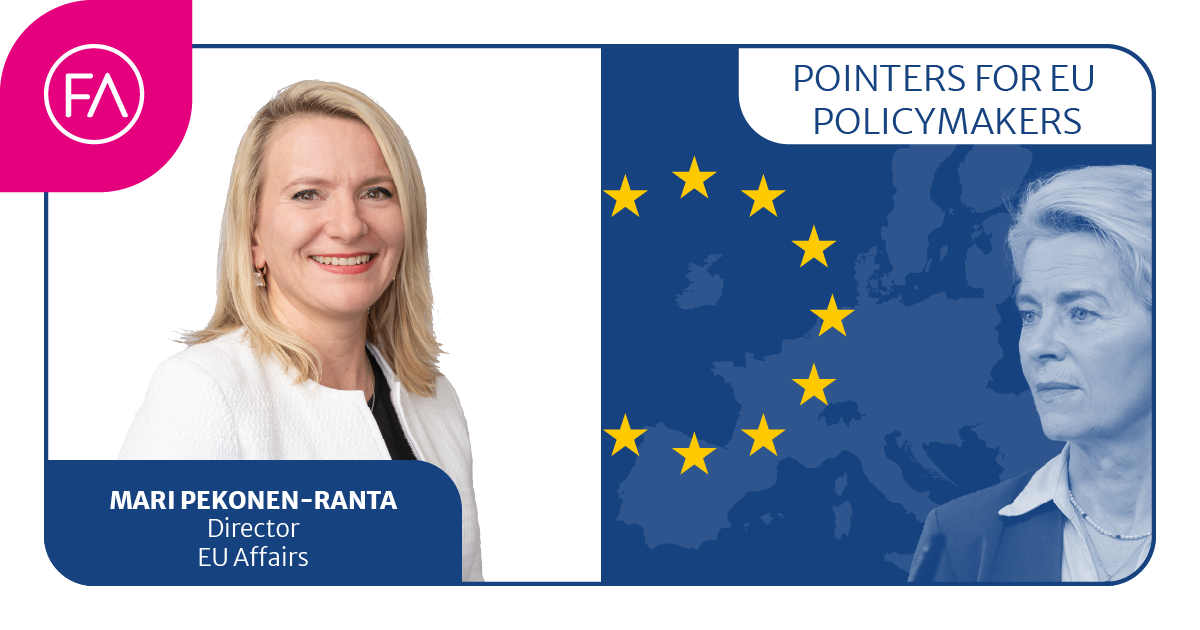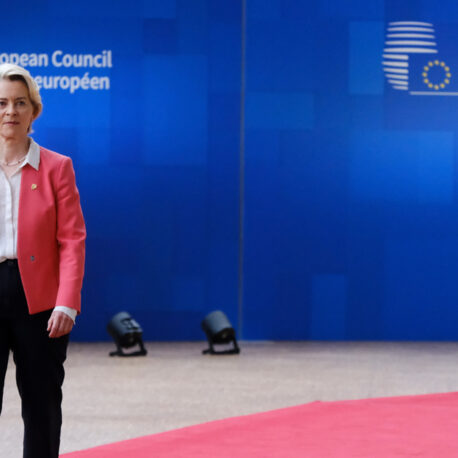
- The financial sector is mostly regulated at the EU level. The volume of regulation has been expanding rapidly in recent years.
- The financial sector’s extensive regulation is necessary to secure market stability and investor protection.
- Policymakers should focus on fixing the overlaps and contradictions found in existing regulation.
Finance Finland’s Director of EU Affairs Mari Pekonen-Ranta names three key developments that have contributed to the influx of new EU regulation:
- The financial crisis. “At the time, securing the stability of markets was of primary importance. However, new regulation was prepared in a rush – and there was a lot of it. The growth of level 2 regulation and the European Central Bank’s (ECB) regulatory power have greatly increased the volume of regulation.”
- Sustainable development regulation. “Finance and insurance have a strong influence on the direction of investments. Sustainable finance regulation is coming in from many sources, but there has been no one to oversee or coordinate it.”
- Digitalisation. “Digitalisation regulation is marked by good aims and intentions, but the combined impact of the extensive and partially overlapping regulation remains uncharted territory.”
“Recent EU-based regulation is characterised by haste: new things are being pushed before there has been enough time to assess the impact of existing regulation”, says Pekonen-Ranta.
What will this lead to?
- Difficulty of implementation. “All companies in the sector want to comply with regulation, but overlapping regulation easily leads to difficulties of interpretation, which can make this hard. Official guidance is not easily available even from the authorities.”
- Effects on corporate finance. “An urgent question at the moment is how we can provide competitive funding for innovations and growth companies.”
- Consolidation. “Small companies often find the administrative burden caused by increasing regulation difficult to manage without outside help.”
- Narrowing range of products. “The regulatory framework can become so heavy that some products will have to be abandoned. This will reduce the variety of options for investor customers.”
“Regulatory efficiency and the need to rationalise regulation are already under discussion in high-level EU debate. We must now ensure that the new policymakers translate their words into deeds and that the EU’s competitiveness is not stifled under regulation.”
The regulatory machine keeps going under its own momentum – is it time to retire mandatory reviews?
Director of EU Affairs Mari Pekonen-Ranta: “A significant contributor to the overall increase and overlap of EU regulations is the so-called review clause.”
- All directives and regulations contain a review clause, which mandates the Commission to evaluate and report on the effectiveness and efficiency of the legal text and propose necessary amendments after a certain period of time.
- A typical review period is two to three years.
“In effect, this creates an automated regulatory machine.”
Longer deadlines. The impact of regulation is rarely immediately evident, especially in the highly regulated financial sector, which is nowadays governed by several overlapping regulatory frameworks.
“The review clause deadlines should be longer.
- Before the reviews, we should see what practical impact the regulation has after it has been implemented for a while.
- Two or three years is a short period when we’re dealing with complex frameworks.”
Example. The procedures related to the sale of investment products involve very extensive and detailed regulation. They cover for example the following:
- Suitability questionnaires: What to ask in order to provide the most suitable and appropriate products for a customer.
- Product descriptions: Costs, risks, expected return, etc.
- Disclosure obligations: How the customer is informed.
- Documentation.
“The process is carefully designed and requires training, IT development and the development of documentation. Even minor changes to the regulation impact all of the above.”
Aiming for competitiveness. In addition to the directive level, regulation and recommendations are also provided at the lower level for example by the ECB and the European Supervisory Authorities (ESAs).
“If we are to improve European competitiveness and find solutions to issues such as climate change, it is absolutely essential to control the regulatory machine and trim overlaps. Workable solutions are rarely developed by building layer upon layer of new regulation on top of the old.”
Text: Aaro Kajaste, MustRead
The article was originally published in Finnish in MustRead’s Brussels newsletter.
Still have questions?
|Contact our experts
Looking for more?
Other articles on the topic

Hooray for simplifying regulation! But obligations must be streamlined thoughtfully, without compromising environmental goals

Putting EU citizens’ savings to work – Commission seeks growth by promoting saving and investment

Finance Finland’s CEO Ahosniemi: The Commission makes grand declarations for better regulation but fails to back them up with concrete measures in its work programme

The EU needs to build a more favourable investment climate




